Highlighting over 60 years of ISES history
In the 1950s a group of forward thinkers recognised the need to create an organisation to promote the development and application of solar energy. A detailed account of the creation and the first 50 years of our history are documented in the ISES history book published in 2004. 60 years later, it is worth highlighting, the motivation for creating the Association for Applied Solar Energy, which later became ISES, namely to promote the development and application of solar energy. The Associations objectives as defined in the incorporating by-laws, were: to foster and encourage the research, development, application and education in the fields related to solar and other energies.
The dream of our ISES founders of a global solar energy industry has become a reality. As reported in the REN 21 2015 Global Status Report, global new investment in renewable energy exceeded USD 270 billion; the total installed capacity of solar PV reached 177 GW and an estimated 7.7 million people worldwide are working directly or indirectly in the renewable energy sectors. The growing markets are the result of breakthroughs in research and development, which have led to major achievements in improving solar energy technologies, and thus drive down costs.
Yet, the ISES goals to promote the development and application of solar energy technologies globally are more relevant than ever. The challenges Farrington Daniels, Henry Sargent and others recognized 60 years ago are more urgent today and are expounded further by the growing risk of climate change. ISES is looking forward to lead the energy transformation to a 100% renewable energy world during this century.
Here is a brief time-line of some of the milestones throughout ISES history.
ISES has its origin in Phoenix / Arizona, USA. A group of industrial, financial and agricultural leaders establishes the Association for Applied Solar Energy (AFASE) as a non-profit organisation.
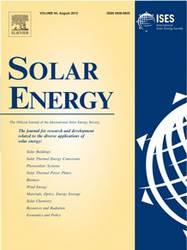
meetings are held in Tucson and Phoenix, USA attractting more than 1000 scientists, engineers and government officials from 36 different countries. The first was a two day Conference on Solar Energy - The Scientific Basis in Tucscon, Arizona in which 96 papers were presented. This was followed by the World Symposium on Applied Solar Energy took place from 1 - 5 November and attracted over 900 registrants. The Solar Engineering Exhibition, held in conjuction with the Symposium, was visted by nearly 30,000 people. On display were examples of solar devices, which included many working models.
The association establishes its first scientific publication "the sun at work".
The first issue of "The Journal of Solar Energy, Science and Engineering" is published.
Dedicated solar scientists decide that radical changes are required for the operation and goals of the Society. Through the reorganisation within the framework of its original concept the name is changed to "The Solar Energy Society". The Society is accredited by the United Nations Economic & Social Council (ECOSOC).
The name of the journal is changed to "Solar Energy, The Journal of Solar Energy Science and Technology".
Prof. Farrington Daniels is elected President and in his honour the "Farrington Daniels Award" is established in 1975
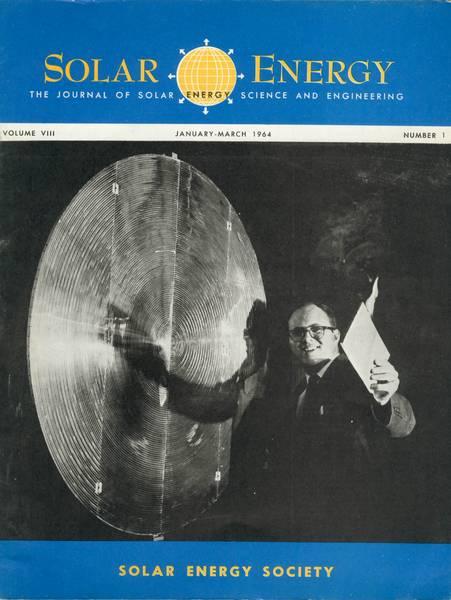
Relocation of the international Headquarters office to Melbourne, Australia.
First international conference outside the USA is held in Melbourne, Australia.
The name of the Society is changed to "International Solar Energy Society".
The first issue of the ISES magazine "SunWorld" is published.
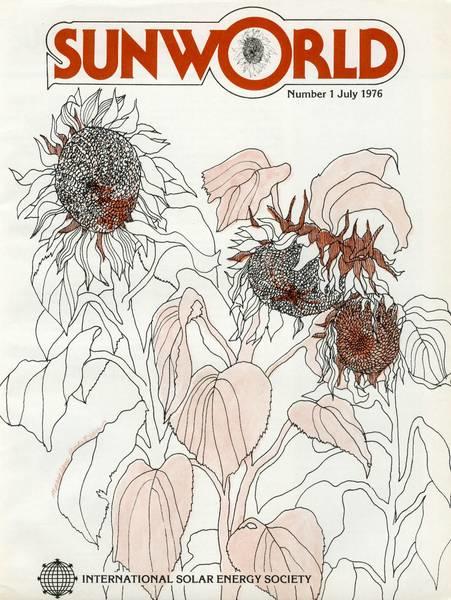
ISES celebrates its Silver Jubilee at the Solar World Congress in Atlanta, USA.

The"Achievement through Action Award" in memory of Christopher A. Weeks is created.
ISES introduces the "Section Sponsorship Programme" in which individuals and sections have the opportunity to sponsor sections in developing countries.
ISES is accepted by the United Nations as a non-governmental organisation (NGO) with consultative status and actively participates in the United Nations Conference on Environment and Development (UNCED), held in Rio de Janeiro, Brazil.
ISES participates the second meeting of the United Nations Commission on Sustainable Development (CSD) in New York to discuss issues of sustainable development and the interlinkages to renewable energy technologies.
The Headquarters office moves from Melbourne, Australia to Freiburg, Germany and becomes a focal point for international projects.
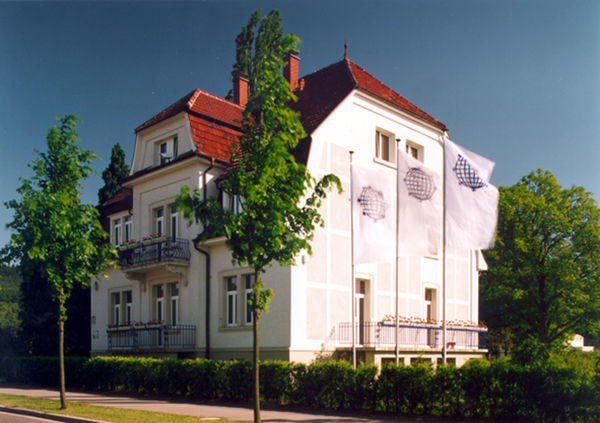
The first woman elected as President. Prof. Anne Grete Hestnes takes office on 01.01.2002. ISES participates in the World Summit on Sustainable Development (WSSD) in Johannesburg, South Africa.
ISES releases the first White Paper "Transitioning to a Renewable Energy World" by Dr. Donald Aitken, outlining the rationale for effective governmental renewable energy policies world-wide.
Together with the World Wind Energy Association (WWEA) and the International Hydropower Association (IHA), ISES founds the International Renewable Energy Alliance (Ren Alliance). Further partners join in 2007 (International Geothermal Association) and 2009 (World Bioenergy Assocation). The goals of the Alliance is to advance policies that favour the increased deployment and use of renewable energy.
ISES Society celebrates its Golden Jubilee at the Solar World Congress in Orlando/Florida, USA in August 2005. The ISES publication "The Fifty-Year History of the International Solar Energy Society and its National Sections" is released at the Congress.
ISES launches the Pocket Reference Books with the release of the first book "Solar Energy Pocket Reference".
ISES releases the second White Paper "Rapid Transition to a Renewable Energy World", by Prof. Dieter Holm presenting a rationale for effective policies to advance renewable energies in the developing world.
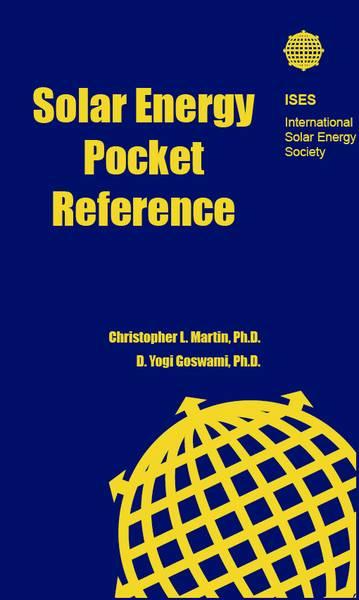
ISES participates in the UN Commission on Sustainable Development (CSD) 14th session and hosts a side-event focusing on renewable energy in developing countries.
ISES inaugurates the Solar Carport at the Headquarters Office, Villa Tannheim in Freiburg.
ISES hosts a side-event focusing on 100% renewable energy in Asia and Africa at the UN Commission on Sustainable Development (CSD) 15 session.
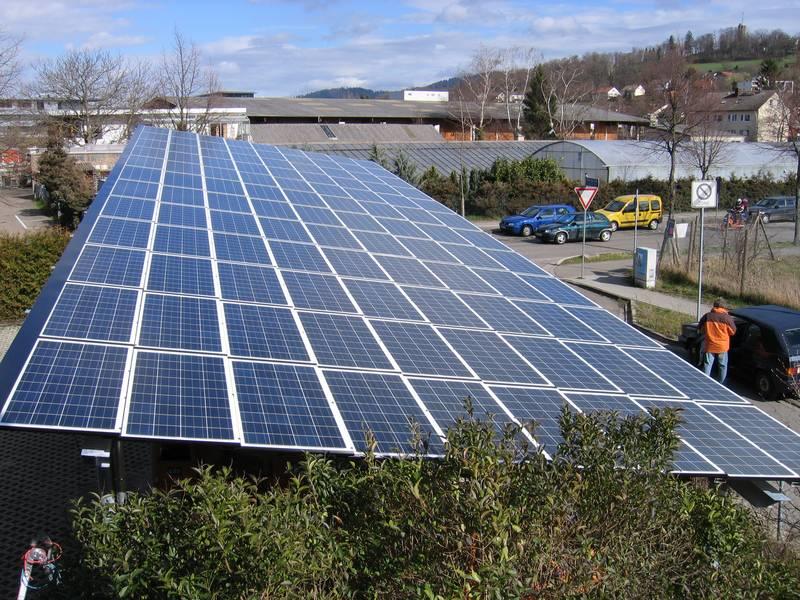
The gas heating system is replaced with a wood pellet heater at the ISES Headquarters - another step towards making the ISES offices CO2 neutral.
The second pocket reference books "Wind Energy Pocket Reference" is released.
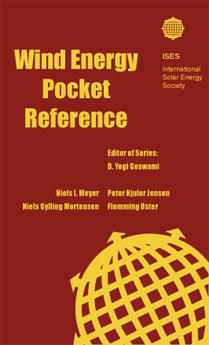
The ISES Solar World Congress is held in Johannesburg, South Africa (only the second time the SWC is held on the African continent).
The pocket reference book "Passive Solar Architecture" is published.
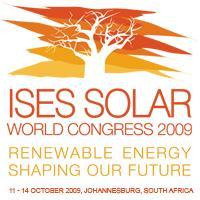
ISES hosts a side-event at the UNFCCC Conference of the Parties 17th Annual Meeting in Durban, South Africa together with the partners of the REN Alliance. This is the third side-event ISES has organised at the international Climate Change Conferences (in 2008 & 2010).
ISES initiates the free ISES webinar series - providing high-quality renewable energy education
ISES celebrates 20 years of ISES headquarters in Freiburg with an open-house event with special guest Prof. Joachim Luther.
The ISES Solar World Congress 2015 is held in Daegu, Korea and attracts over 600 scientists and engineers from all over the world.
The 2015 ISES Awards are given to:
- Farrington Daniels Award ‐ Prof. Richard Perez, USA
- Achievement through Action Award – Prof. Klaus Vajen and his research group at the
- Department of Solar and System Engineering, the Institute of Thermal Energy Engineering, University of Kassel, Germany
- Global Leadership Award in Advancing Solar Energy Policy – Prof. Shi Dinghuan, China
Together with the REN Alliance, ISES holds a side-event at the COP21 in Paris titled "Renewables Working Together- Case Studies".
ISES Conference Proceedings database launched - proceedings.ises.org (open-access)
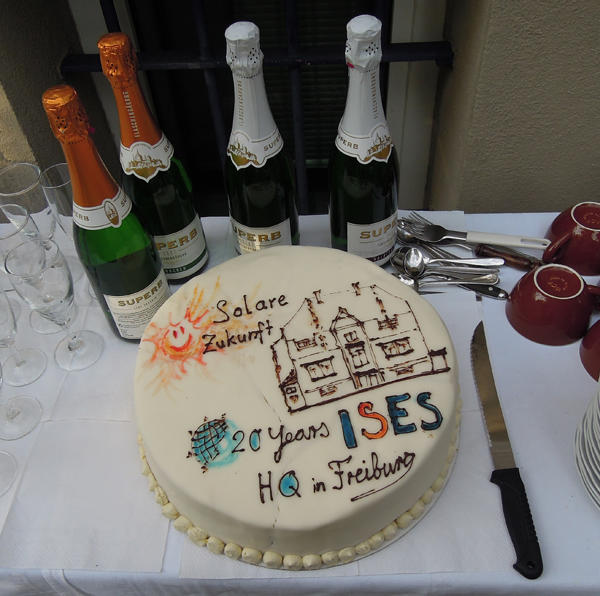
ISES EuroSun 2016 in Palma de Mallorca, Spain (11-14 October 2016)
ISES organizes side-event at COP22 in Marrackech, Morocco: "Renewables Working Together" with the REN Alliance
Solar Energy journal increases to 18 issues per year (up from 12 per year) and introduces Subject Area Editors. Prof. Yogi Goswami (Editor-in-Chief of Solar Energy) is awarded the Karl W. Böer Solar Energy Medal of Merit.

ISES hosts the ISES Solar World Congress 2017 in Abu Dhabi (29 Oct - 02 Nov 2017). The Congress was held together with the IEA Solar Heating and Cooling Programme's SHC 2017 conference.
The first ever Renewable Transformation Challenge is launched by Elseiver and ISES.
The 2017 ISES Award recipients were:
- Farrington Daniels Award. Recipient: Professor Robert Pitz-Paal
- Achievement through Action Award - In memory of Christopher A. Weeks. Recipient: Professor Aldo Steinfeld of the ETH Zurich in Switzerland
- ISES Global Leadership Award in Advancing Solar Energy Policy - in honour of Hermann Scheer. Recipient: Mika Obhayashi
- ISES Special Service Award. Recipient: Dr. Elimar Frank, Switzerland
- ISES Fellow. Recipient: Torben V. Esbensen
- Renewable Transformation Challenge: Dr. Sebastian Groh of ME SolShare
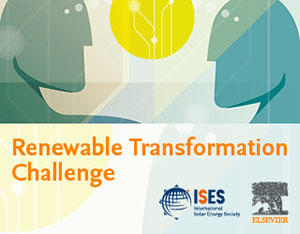
ISES hosts EuroSun 2018, the 12th International conference on solar energy for buildings and industry, in Rapperswil, Switzerland (10-13 September 2018).
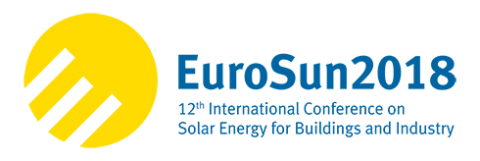
ISES hosts the 2019 Solar World Congress in Santiago, Chile from 4-7 November 2019.
The second installment of the Renewable Transformation Challenge, together with Elsevier, was launched in February of 2019 - the winners were presented at the Solar World Congress.
